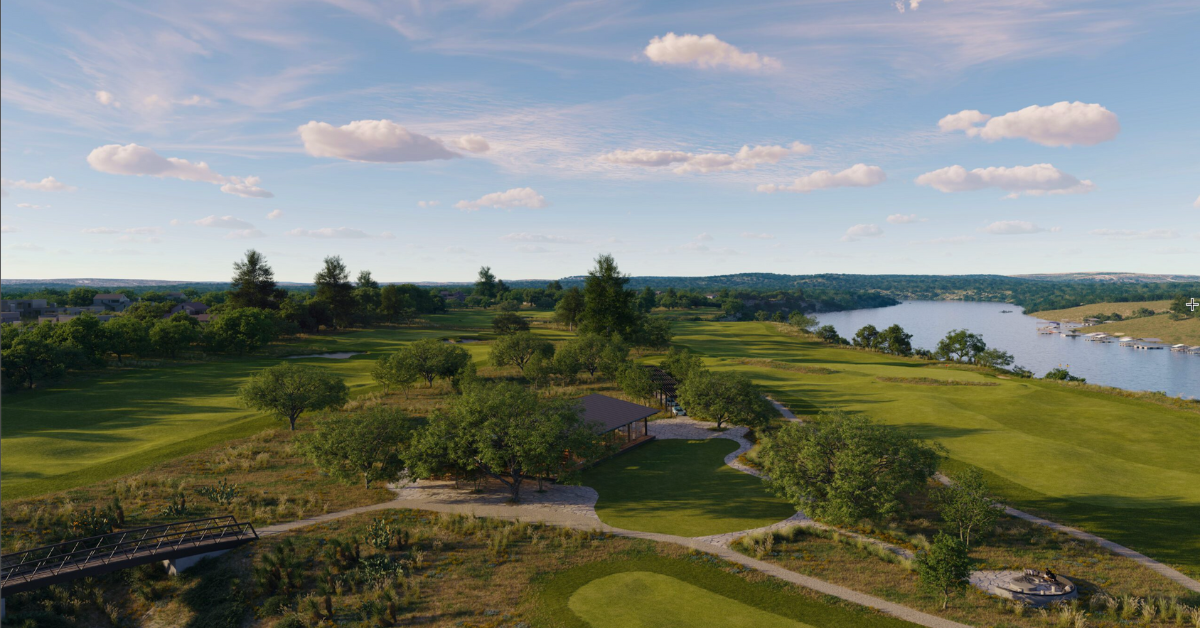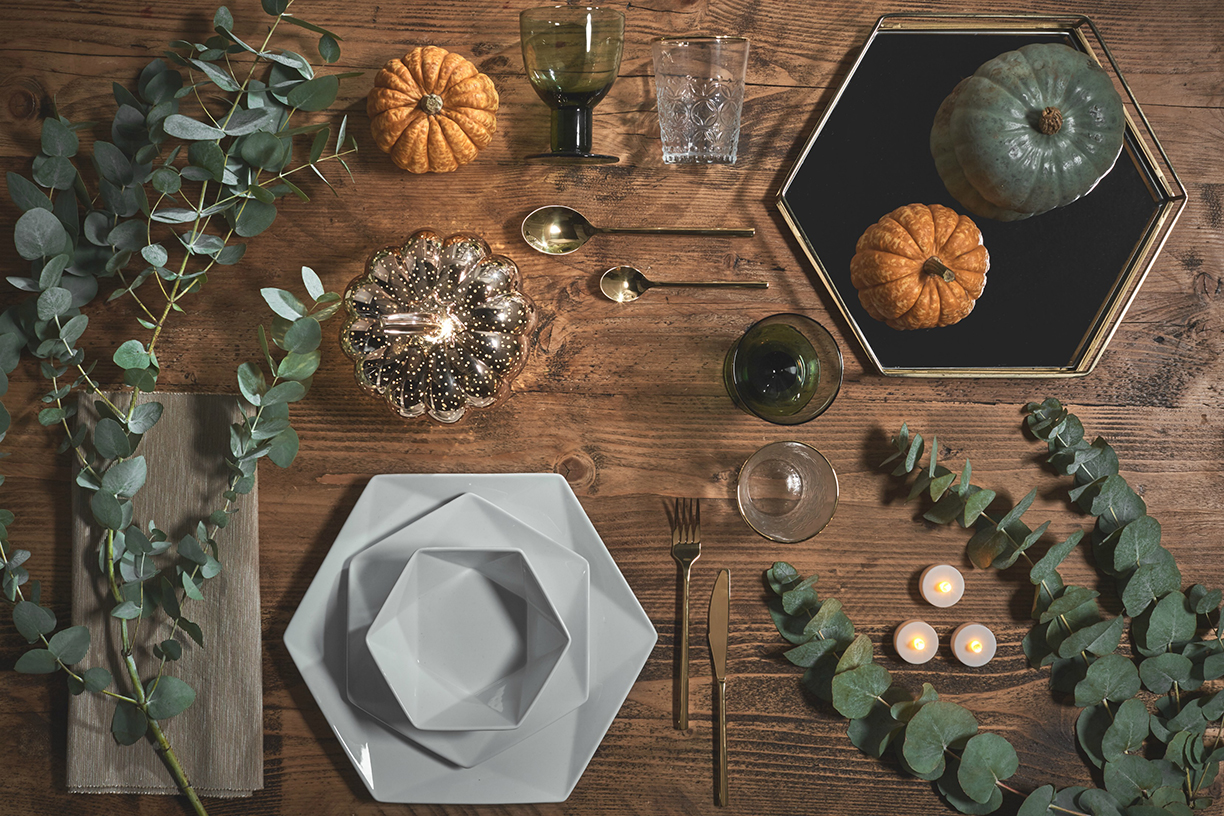
Photo courtesy Lights4fun.
As the summer passes and transitions to fall, there are several ways you can incorporate fun, easy changes to your home style to showcase a sleek, sophisticated style that flows perfectly with the season. Rebecca Snowden, Interior Style Advisor at Furniture Choice Limited, shares three key décor tips to style a cozy home for Autumn 2019.
Jewel Tones and Inviting Textures
This autumn, let rich jewel tones like deep mauve, sapphire blue and dust pink take center stage. “Embrace the sophistication of the season in all its moody glamour,” says Snowden.
A lush black velvet bed instantly adds elegance to a bedroom and sets a luxurious base to build upon. Layer deep, rich tones via opulent textures like velvet and faux fur to create a lavish, comfortable setting.
Light up the space with distinctive fixtures to enhance the overall ambiance. “Individual pendant bulbs give off a modern, almost industrial feel while sleek, standing lamps are practical and stylish,” Snowden notes. Display fresh flowers for a burst of life or dramatic floral artwork with contemporary charm as final touches.
Photo courtesy LUXXU Home.
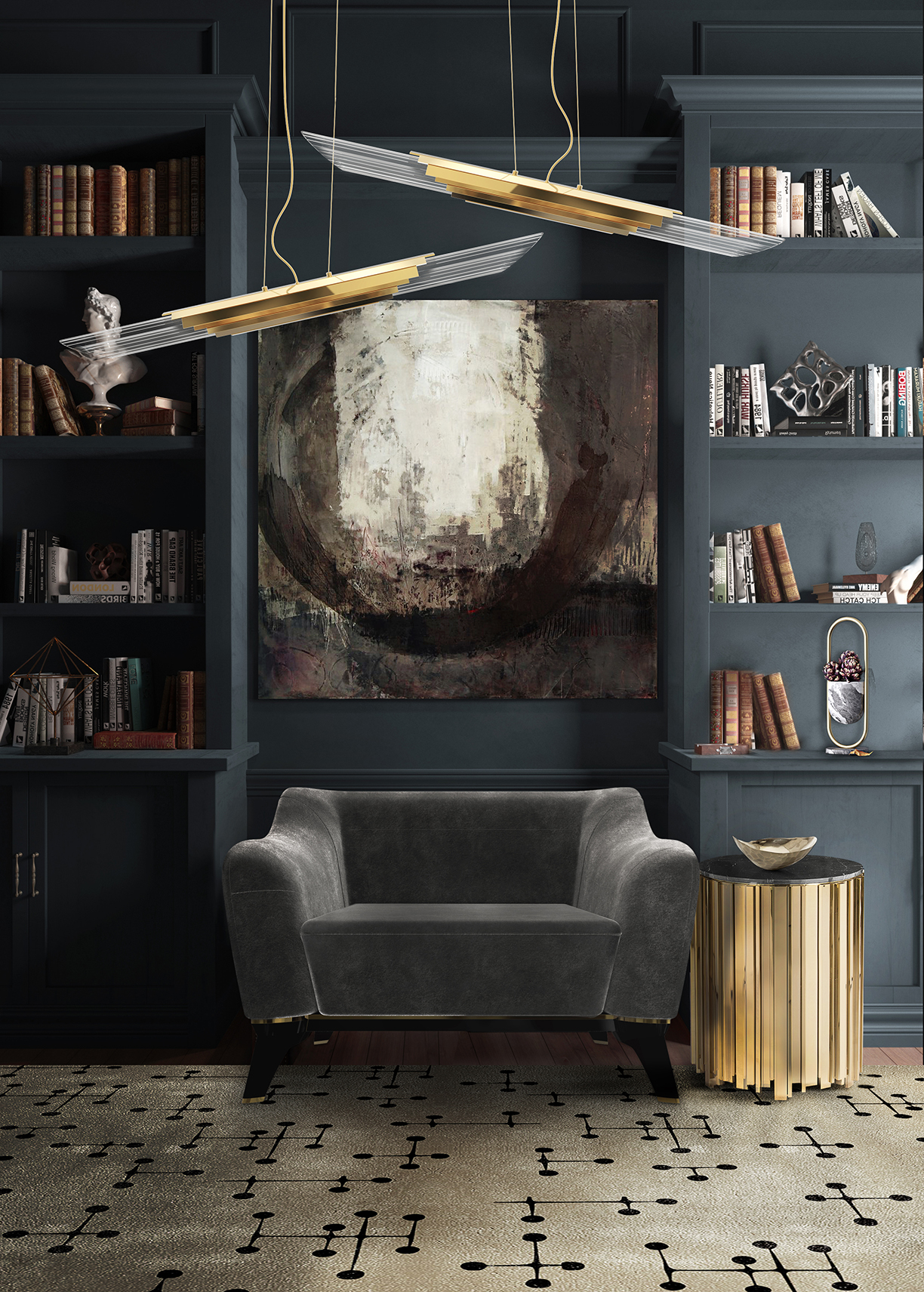
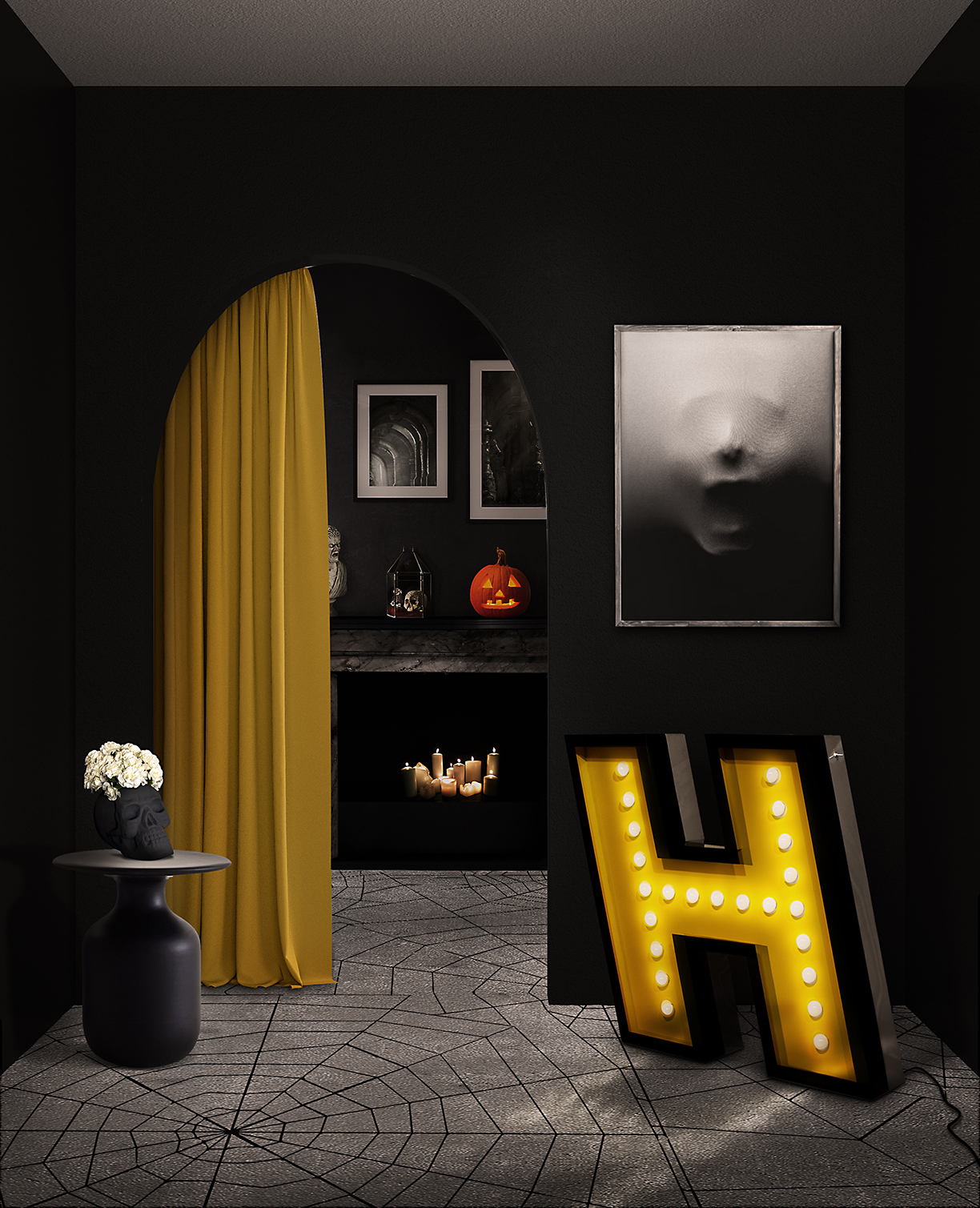
Black and Yellow – A Perfect Pair
On a brighter note, pairing black and yellow results in a lighter, modern take on autumn décor. One part dark, one part festive, and altogether stylish. Choose a dark yellow like mustard, in homage to autumn’s signature leaves.
“This trendy color contrasts nicely with a sleek black leather sofa to produce an edgy and seasonal-appropriate palette,” says Snowden. Go bold with a mustard feature wall or start small with yellow cushions, rugs and planters.
With this style choice, Snowden also recommends keeping the rest of the room simple and opt for pieces with clean lines to prevent overwhelming the senses. Add warmth with a soothing accent color like forest green, achieved through incorporating dark green, leafy plants. These not only bring in life but also a sense of freshness, all while contributing to the overall style.
Photo courtesy DelightFULL.
Accessorize
In the spirit of transitioning into the season, get crafty and DIY some autumn-themed accessories. “Metallic accessories are a simple and effective way to add a pinch of glamour and light to any space,” Snowden advises.

Photos courtesy Lights4fun.

Usually, it’s possible to sum up the outlook with a pithy phrase, but this year the luxury landscape is nuanced. Some markets sizzle; others simmer. Dynamic outside forces are at play and will potentially exert even more influence in 2019. In the background, the words recession and bubble are whispered, but most experts don’t see either in the cards, particularly for residential real estate in 2019.
“In most markets, I think it’s a case of ‘from great to good,’” says Stephanie Anton, president of Luxury Portfolio International.
“We’ve left a crazy market, and we’re moving into a more normal market,” shares John Brian Losh, chairman of Who’s Who in Luxury Real Estate. “We are beginning to see a more normalized market where supply is more equal to demand. Even in the luxury market, there are fewer bidding situations.”
According to Redfin, the number of competitive offers fell from 45 percent to 32 percent in 2018. Still, some ZIP codes in busy markets such as Boston, Washington, D.C., and the Bay Area remain hotbeds of competition, with the number of multi-bid scenarios increasing in the third quarter.

© istockphoto.com/JZHUK
Concerns about potential bubbles continue to percolate, but economists and other experts caution that fundamentals are strong and for real estate the next downturn will be different. “The recent tax reform and increased government spending have been a shot in the arm of the U.S. economy,” Tim Wang, head of investment research at Clarion Partners, explained to journalists at the Urban Land Institute’s fall conference. Wang and other experts expect the current expansion of the economy to continue through 2019, tapering to 2.5 percent next year.
“The housing market is following the trend in the overall economy, which needs to be noted because housing led the last downturn,” comments Marci Rossell, chief economist for Leading Real Estate Companies of the World, citing politics and global uncertainty as factors affecting real estate. This time, she says, “the casualties will be a little bit different, and because of that I don’t anticipate a meltdown.”
A cooling period is how Craig Hogan, vice president of luxury at Coldwell Banker Real Estate, characterizes the luxury climate, particularly in the second half of 2018. It’s a change Coldwell Banker has anticipated. “For any of us to think it was always going to be incredible is a little naive. The market is always going to fluctuate.” Hogan says it’s important not to interpret cooling as a market decline. “Cooling is a normal fluctuation, while a decline happens when the value of homes begins dipping.”
“There hasn’t been any great price suppression. Houses are staying on the market a little longer, but demand is still healthy,” says Losh.
“I think we’re still going to have a very strong year overall. I do believe we’re seeing price adjustments, and that’s okay. I think the key is watching how long properties are staying on the market and watching the size of the price adjustments,” observes Lesli Akers, president of Keller Williams Luxury International.
The average sales price for Sotheby’s transactions is up year over year. “From a luxury point of view, many of our companies are having a record year,” says Philip White, president and CEO of Sotheby’s International Realty. “Revenues are up, and in some cases pretty significantly,” he shares, noting that this number also reflects significant recruiting and/or acquisitions by some companies.
Recent stats show prices for upscale properties still increasing, but at a slower pace than past years. The number of sales in many places has dipped, but that differs by location, and in more than a few instances sales still exceed 2017.
Data from the Institute for Luxury Home Marketing (ILHM) shows median prices for single family luxury homes climbing 8.5 percent in November over October, while the number of sales fell 11.7 percent. For attached luxury properties, sales rose 2.6 percent with a 2.3 percent hike in prices.
Putting the current market for real estate overall into perspective, Lawrence Yun, chief economist for the National Association of Realtors, said, “2017 was the best year for home sales in 10 years, and 2018 is only down 1.5 percent year to date. Statistically, it is a mild twinge in the data and a very mild adjustment compared to the long-term growth we’ve been experiencing over the past few years.” Yun and other housing economists are quick to point out that new construction still hasn’t caught up with demand and foreclosure levels are at historic lows, factors which make the current climate different than the run up to the recession. NAR’s forecast calls for an overall price increase of about 3 percent in 2019 while the number of sales flattens or edges up very slightly.
Tale of Two Markets
Luxury’s story is a little different. “This year the luxury market has been a tale of two markets, for sure. Some areas are struggling, but most have been stronger than many realize, particularly in the first half of the year. As median prices have been slowing (and getting lots of media attention), the top 5 percent of many major metro markets nationally have been growing, with sales over $1 million up over 5 percent year over year and prices breaking records, in some cases by double digits. In the majority of markets, inventory has been selling faster. This is happening simply because of the health of the affluent,” observes Anton.
What sets this year’s outlook apart is that some places are having a strong, dynamic market, while others are seeing a softening, often only in specific price brackets. “The slowdown that started on the East Coast is having some effect on the West Coast. But it’s not a typical slowdown,” says Mike Leipart, managing partner of new development at The Agency. “Good product that has relative value is continuing to transact.”
The top three sales nationally in the third quarter, each over $30 million, occurred in Laguna, and seven out of the top 10 were in Southern California.
Rather than a general market malaise, Leipart characterizes the slowdown as more of a spec home problem. “It’s just too much has been built too fast, and not all of it is very good. The people who thought they could build a house for $15 million and sell it for $30 million are struggling.”
The higher price points in L.A. may see an even stronger downturn in the near future, suggests Bob Hurtwitz, owner of Hurwitz James Company, who typically works in the very high end. “There is a lot of inventory on the higher end, and luxury home buyers are usually in a position to wait and see. The drops in price are a lot more dramatic on property at $15 million and above, and buyers are aware of the benefit in waiting to see how it plays out. At the ultra-high end of $100 million or more, you are going to see and already are seeing huge reductions in price.” What’s hot in L.A.? Luxury penthouses in full 24-hour security buildings in prime areas, according to Hurwitz. “High-end penthouses will continue to be in-demand from foreign buyers purchasing as a part time home or for housing for their children.” Other price brackets, notably the $1.5-million to $3.5-million range, are busy, and, Hurwitz says, his agents are doing a lot of deals.
Perceptions of prices in Manhattan can be skewed, since recent closings are often for new construction for which contracts (and prices) were written a couple of years prior. Even though stats show sales decreasing, Ellie Johnson, president of Berkshire Hathaway HomeServices New York Properties, says, “There is still a healthy but steady group of buyers that are still out there in the high-end luxury landscape.” Additionally, New York is particularly keyed to Wall Street, and volatility in the stock market often means more money gets transferred into brick and mortar. “We’ve seen an uptick that we didn’t have at the beginning of the fall season,” Johnson observes. Despite a less than stellar real estate market at year end, New York remains a global gateway and the top city for global wealth.

Manhattan
© istockphoto.com/CreativeImages1900

Los Angeles
© istockphoto.com/SeanPavonePhoto

St. Petersburg
© istockphoto.com/SeanPavonePhoto
In other locations, particularly those with lower prices for upscale properties compared to California, Florida or New York, reports show strong interest and price growth. An acre in one of Atlanta’s prime addresses in Buckhead can demand as much as $1 million. It’s just one indication that luxury here continues to reach new price levels with considerable demand coming from outside the region, including buyers from California and Florida. Some relocate simply because they want a home in the city; others follow corporate moves. The city has also become a favorite for the film industry, which has become a $4 million industry. “It’s changing everything about this city,” says Debra Johnston with Berkshire Hathaway HomeServices Georgia Properties. Luxury really doesn’t begin until the $5 million threshold, says Johnston, but prices compared to Florida and California are reasonable.
At one time, it was thought it might take more than 20 years for Florida real estate to recoup from the recession. In October, the state tracked 82 consecutive months of price hikes for both single-family and condo-townhouse properties, with many cities showing double-digit increases in the number of sales. “The overall market in Florida, particularly higher-end areas such as Sarasota, Naples and Palm Beach, is definitely strong and stable. Maybe not as robust as say 2013 and 2014, but we haven’t had any major slide — except the economists talking about the market slowing down,” says Pam Charron with Berkshire Hathaway HomeServices Florida Realty in Sarasota.
“The St. Petersburg market seems to be performing differently than other Florida markets and other national trends,” observes Tami Simms with Coastal Properties Group, noting November sales skyrocketed over the prior year. “We have developed into a year-round market with luxury downtown condominiums in high steady demand.” Another sign of consumer confidence is lack of defaults on pre-construction sales. “When we experienced the crash, those buildings that had been sold out prior to completion experienced a significant number of defaults. We see none of that in this instance.”
Florida is one of several states including Texas and Nevada benefiting from changes in tax law. Tax changes not only force some to reevaluate where they live, but they also impact the margins of price brackets. “While it doesn’t mean people wholesale leave New York or San Francisco, marginal changes tickle up and trickle down to the next closest price level,” and it will take several years for that to be felt, says Rossell.
The New Market
“So many trends have taken place they are no longer trends, they are the new market,” observes Hogan, using new construction as one example. “It doesn’t matter where you go or who you talk to, new construction is part of the conversation.”
Global demographics will have a long-term impact. “What luxury is adjusting to is a different demographic worldwide. Those aging baby boomers are kind of done with big homes and the following demographic is 50-percent smaller,” Rossell says.
Changing demographics affect location and property type. “I think we’ll see increased demand for primary residences in traditional second home and resort markets. We are seeing this trend in select markets, as individuals who have the freedom to work remotely are opting to live in places where they feel their quality of life will be the best,” observes Anthony Hitt, president and CEO, Engel & Völkers Americas.
Summer 2019 will mark the most prolonged economic recovery since World War II, but wild cards including interest rates, a trade war and further instability could easily derail this expectation. However, there is a silver lining to the current market. Increasing inventories will bring some buyers back to the market and create more demand. “I think it’s going to a be a great opportunity. People will buy things that they haven’t considered, and they’re going to buy more of them. I think that’s been a big challenge. We’ve not had the inventory, and a lot of buyers kind of just fell out of the market because they didn’t feel like there really was one,” explains Akers.
ILHM President Diane Hartley believes 2019 will be a year of opportunity for both buyers and sellers provided they remain agile, innovative and adaptable to their local market influence.
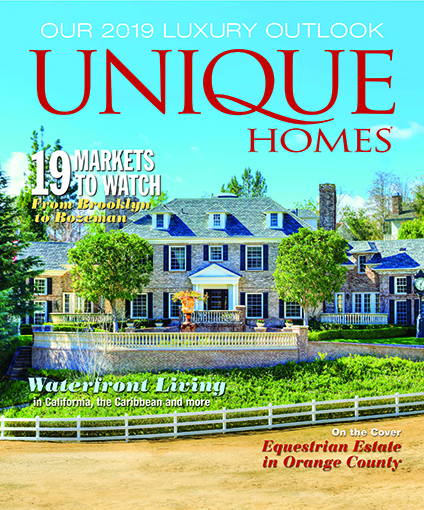
This story originally appeared in the Winter 2019 edition of Unique Homes Magazine.
As we enter 2019, here are four interior design trends to watch, according to today’s top interior designers as told through Ketra.
Technology Brings Another Dimension
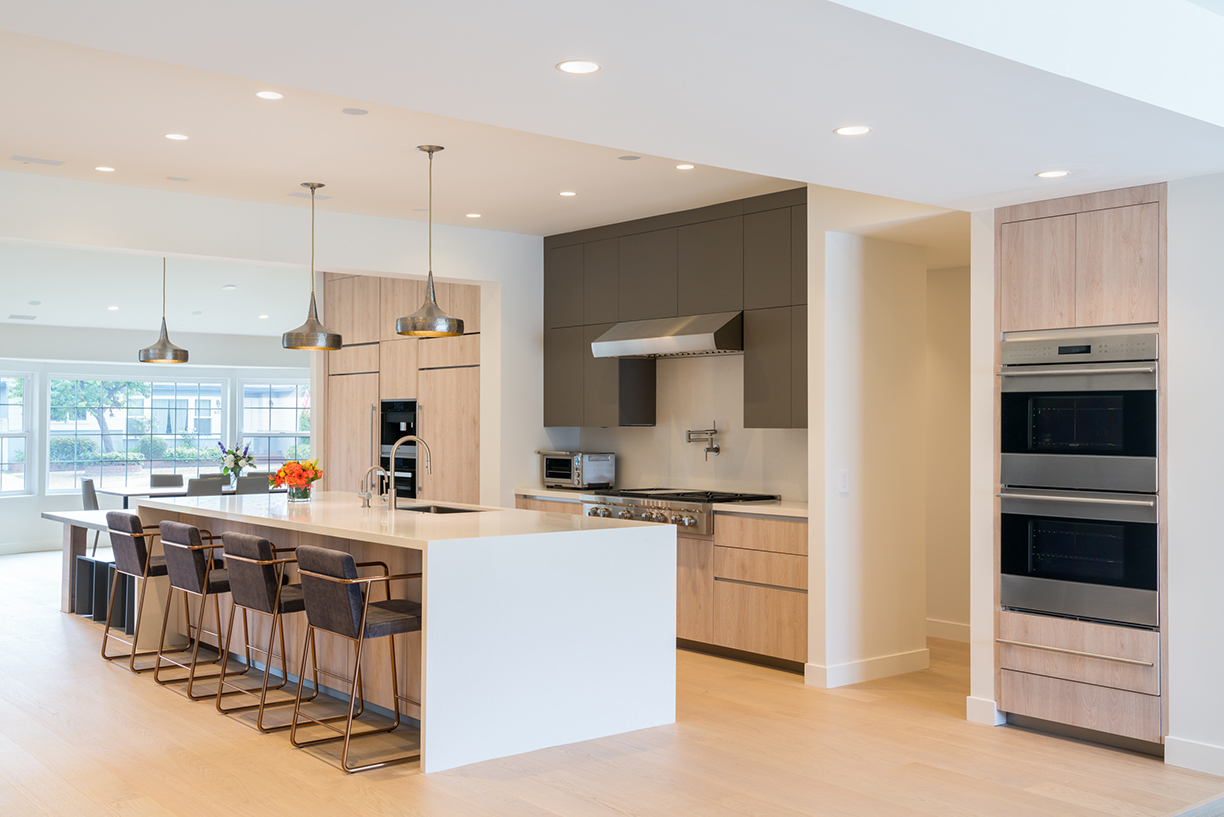
photo by Ketra
In 2019, smart home technology will be a must — whether it’s remote lighting control, window shades built for energy savings, or full-home voice automation.
“One of the major advantages to tech and connectivity in the home is the ability to manage the property remotely, with doorbells now doubling as security cameras, wireless thermostats that can be preset or adjusted while away, or programmable lighting and window shades for energy savings and to make it appear that people are in the home,” explains Erin Ruby, founder of Erin Ruby Design, LLC.
“Technology always has something new that peaks a client’s interest,” adds Rendell Fernandez, design director at Pembrooke & Ives. “Voice actuated smart speakers now add another layer of home automation controls that were non-existent just a few months ago.”
Investments in Meaningful Furnishings
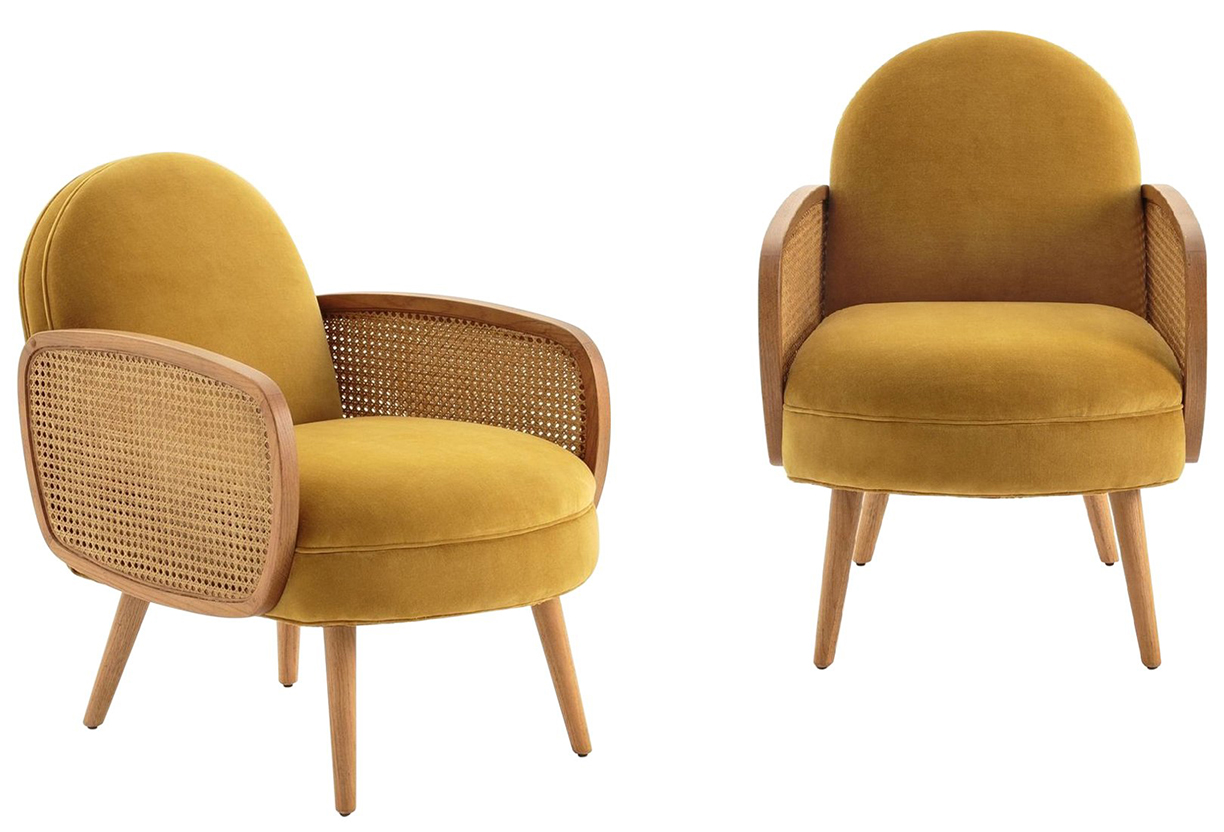
In 2019, there will be a greater value in selecting quality products. “In response to the culture of fast furniture and disposable pieces purchased solely for convenience, more and more manufacturers are offering quality products in reasonable lead times,” Ruby says.
“Even IKEA is making fine crafted products now! Businesses are seeing the value of investing in meaningful pieces, be it furniture, artwork, or lighting, to elevate the experience within their space and offer a more thoughtful representation of their culture and brand.”
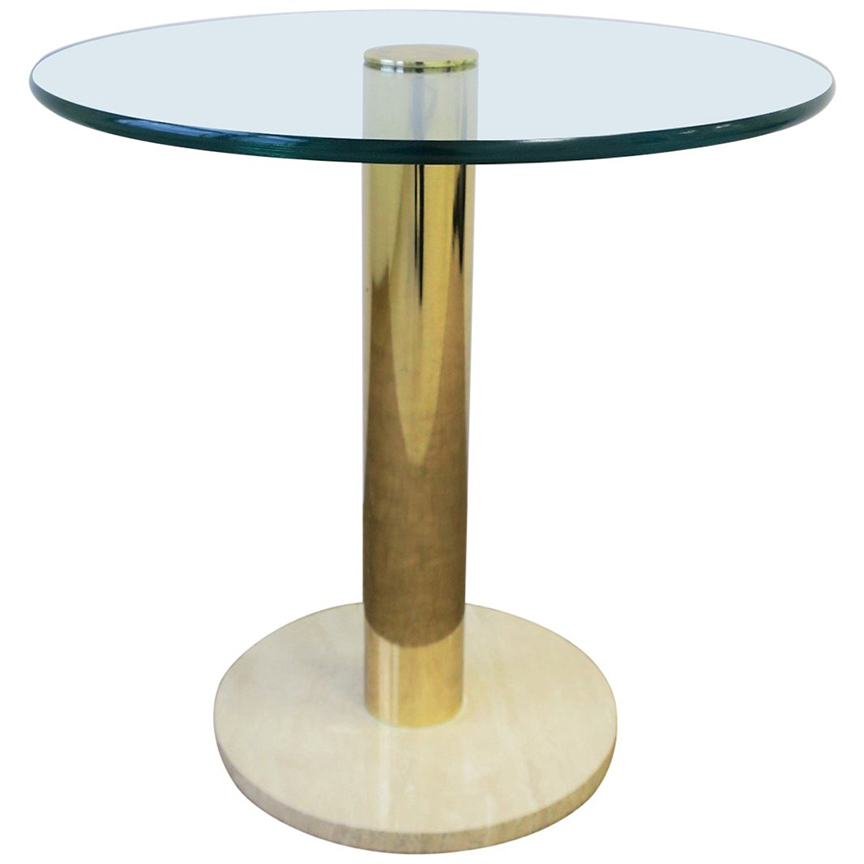
photos by 1stdibs
Neutral Hues are the Best Canvas
According to the team at Pavarini Design, 2019 will bring about neutrals grays and pale pastels that contrast early ’80s varieties of pale plums, pomegranates, and violets contrasting dark charcoals.
Benjamin Moore recently announced the Color of the Year 2019 — Metropolitan AF-690, a stylish gray with cool undertones, reinforcing that neutrals are in.
While most colors are driven by client preferences that illustrate the diversity of the full color spectrum, Fernandez agrees that the designers at Pembrooke & Ives stay true to neutral tones and natural finishes.
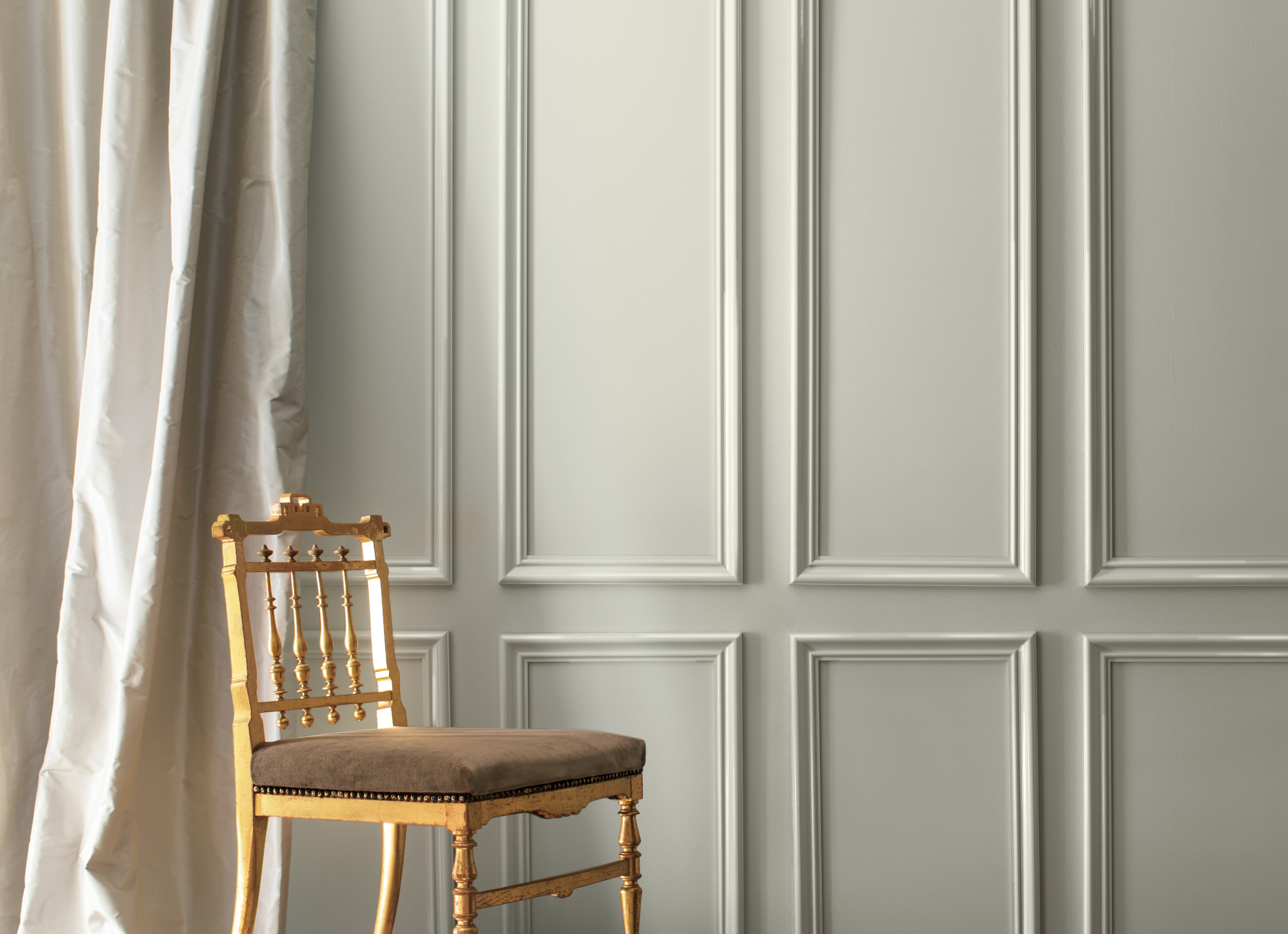
Photo by Benjamin Moore
Lights that Mimics of the Natural Spectrum of Sunlight
Natural light is a key element to think about when designing a space. “It’s our connection to nature and makes us feel good,” says Charles Pavarini III and J. Randall Tarasuk of Pavarini Design. “The ability to amplify the natural spectrum of light coming through your windows is something we have never had the ability to do before. It’s a breakthrough that is sure to find a growing market.”
“As the quality of lighting technology improves and evolves, this will continue to be an increasingly vital aspect of the built environment,” Ruby agrees. “Any space is only as good as it’s lighting. Lighting dictates how spaces are perceived — warm and inviting, or cold and stark.”
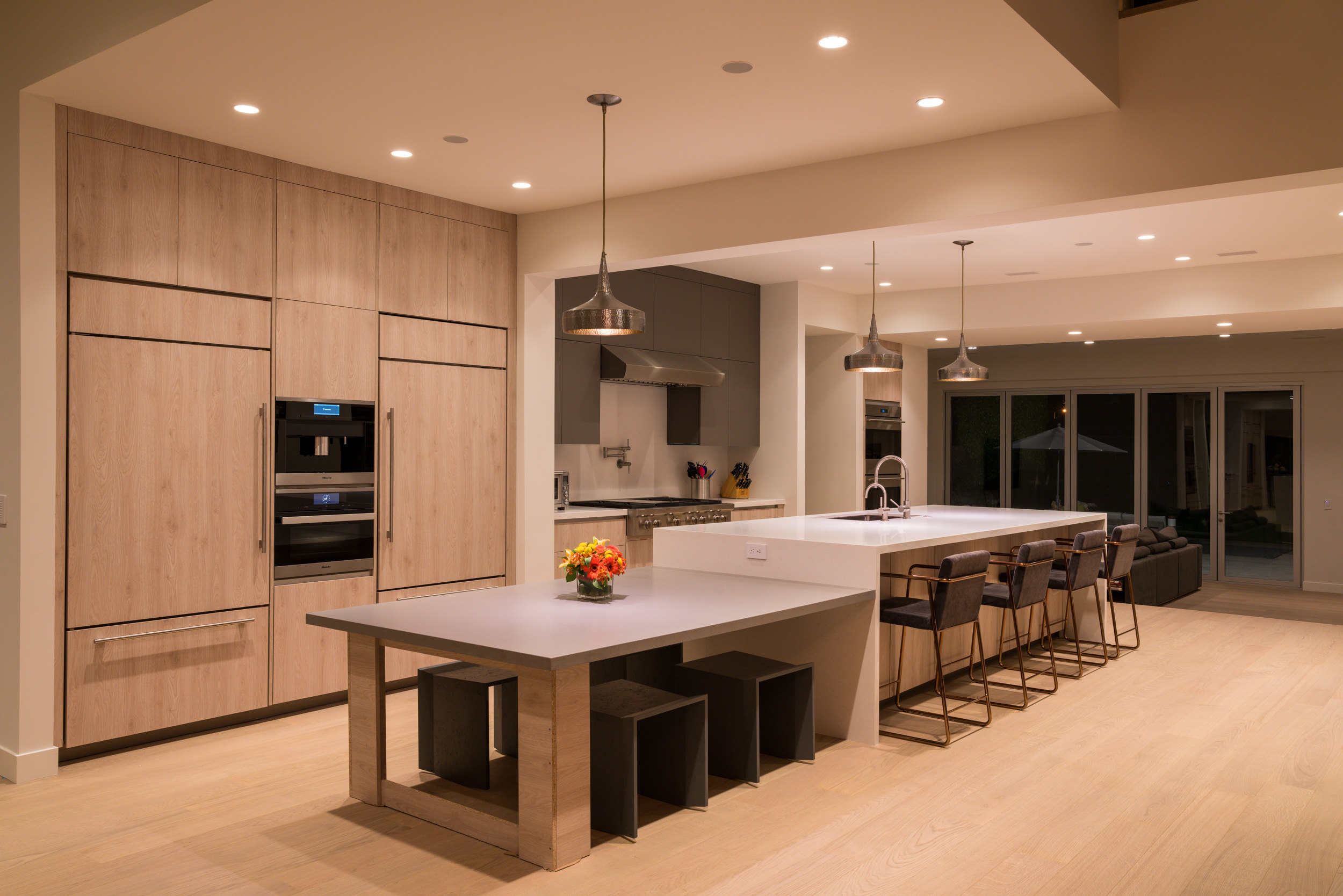
photo by Ketra
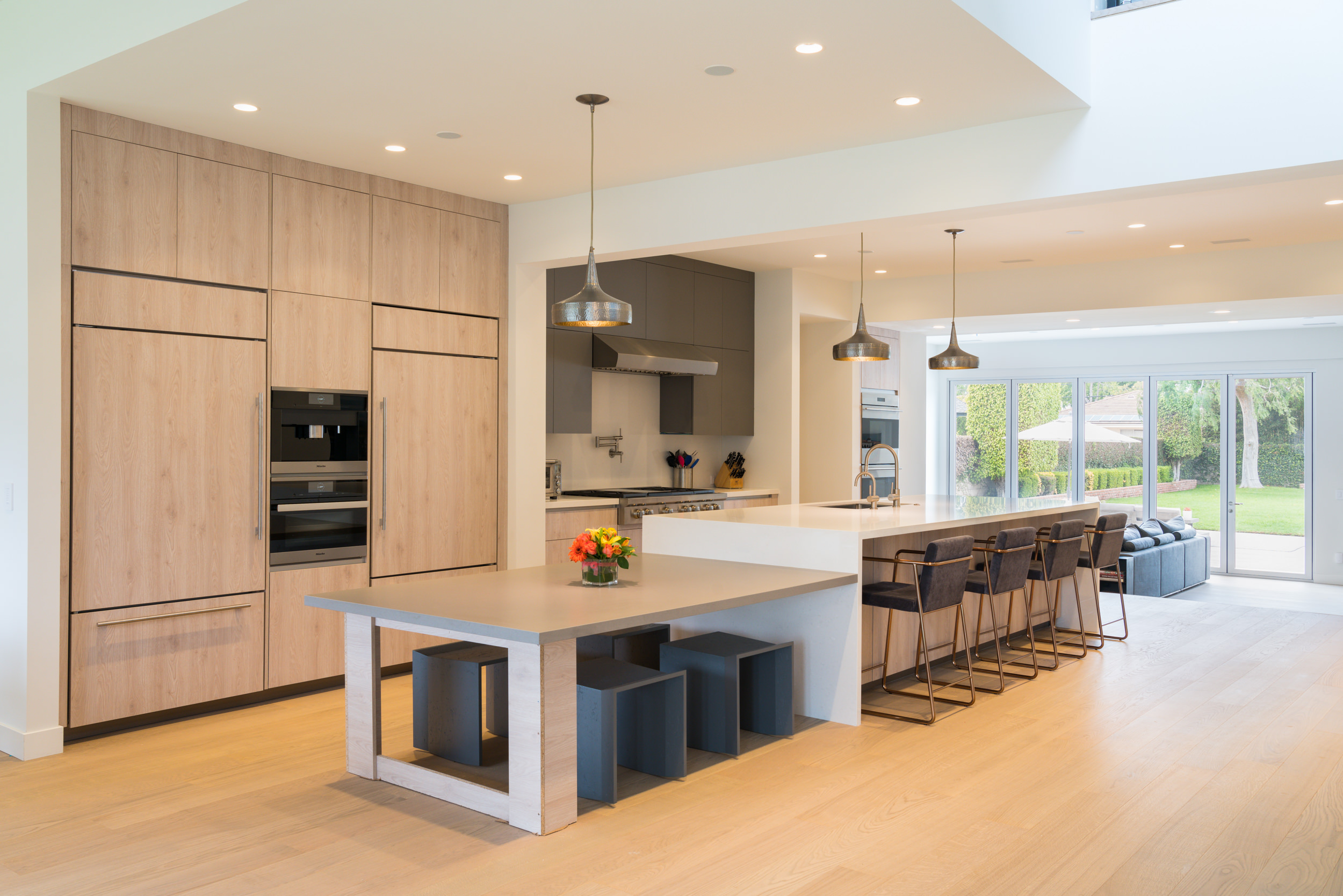
photo by Ketra
W Costa Rica, Reserva Conchal will feature two properties — the townhomes of Aromo and the Llama del Bosque — both of which include professional services, first-class amenities and an iconic and contemporary design.
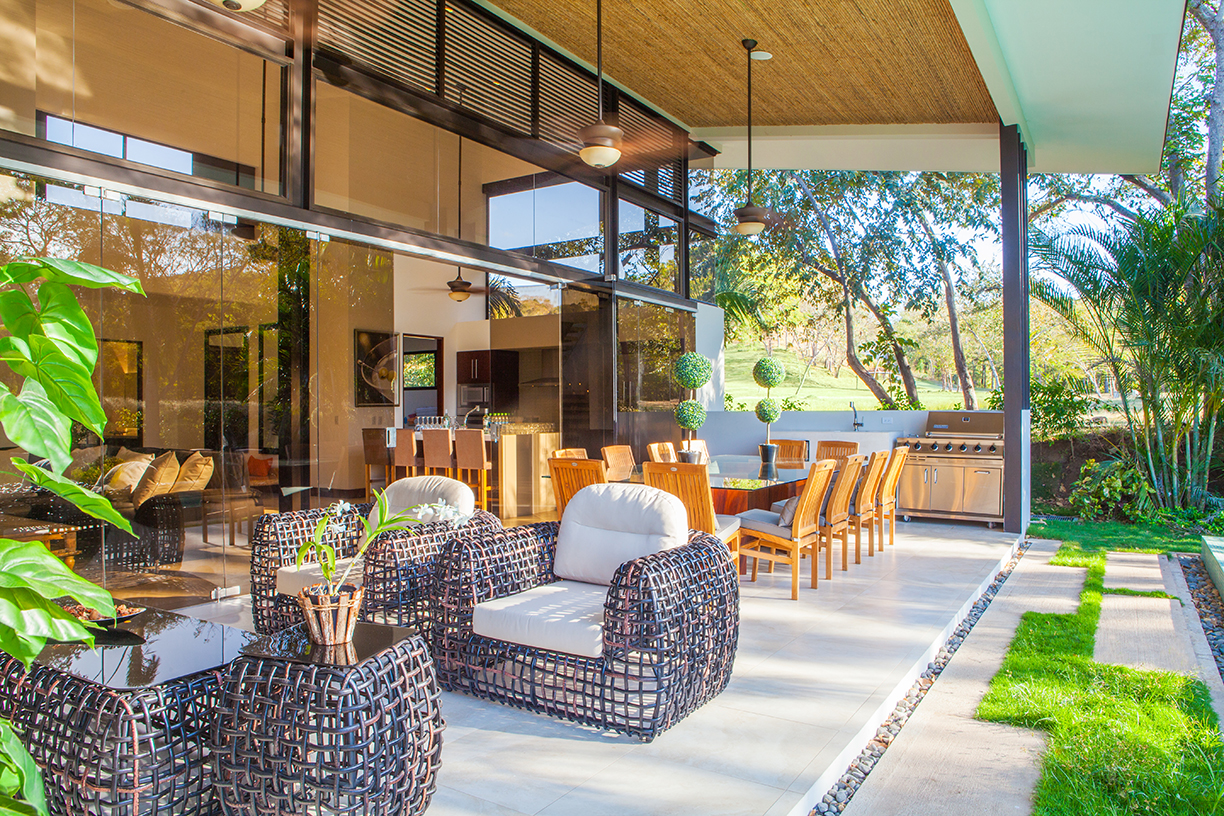
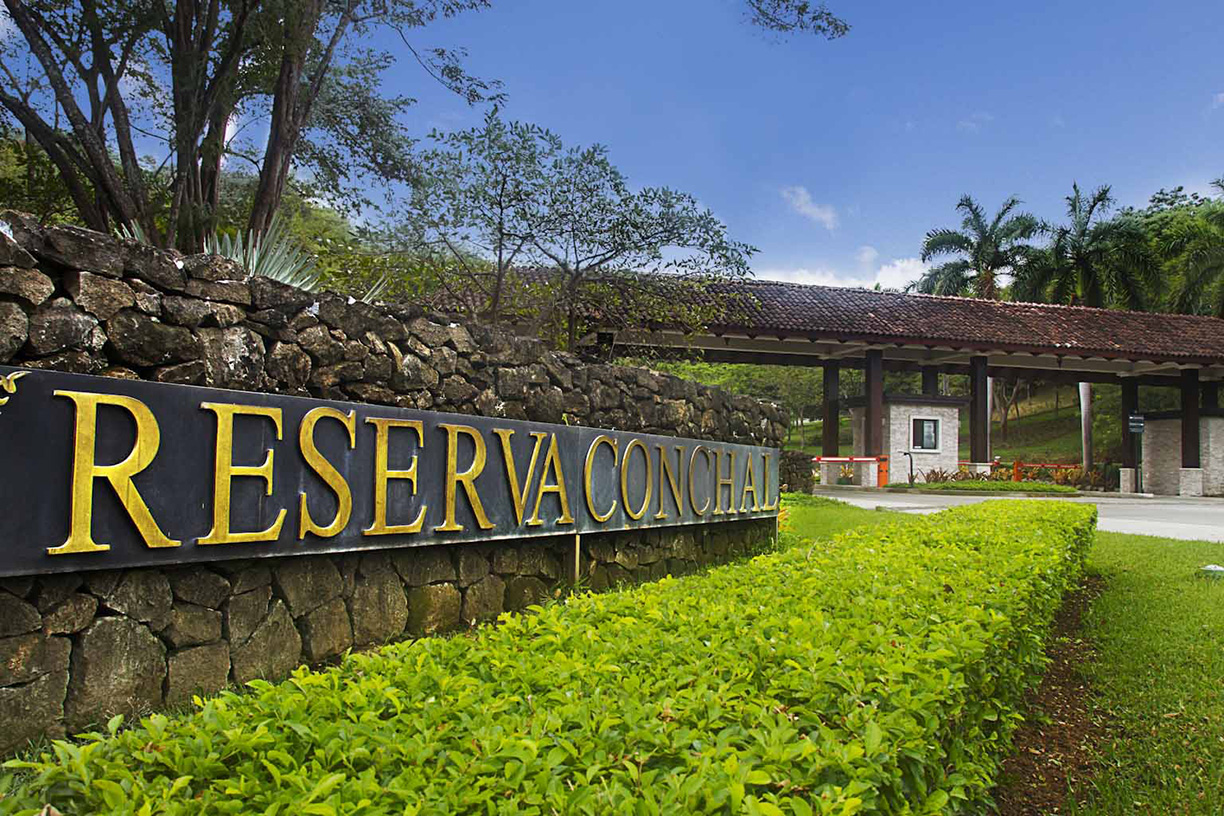
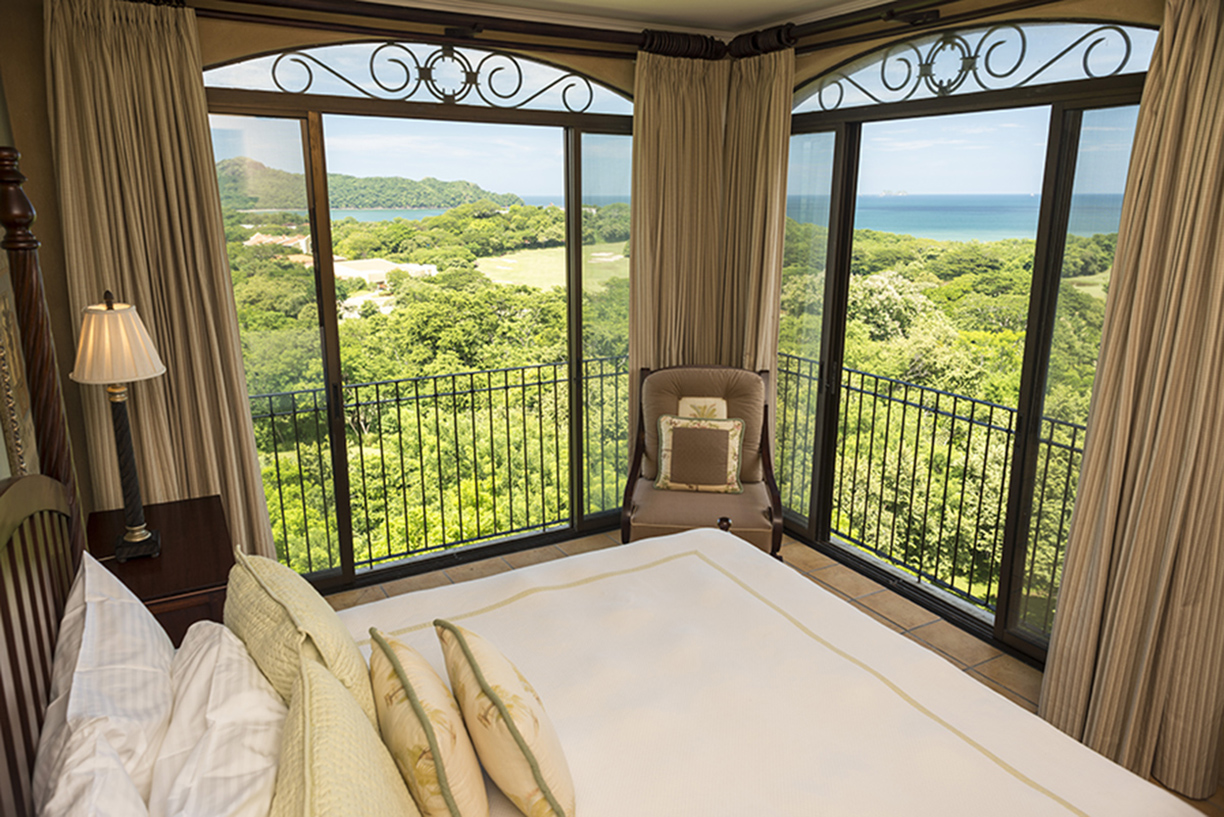
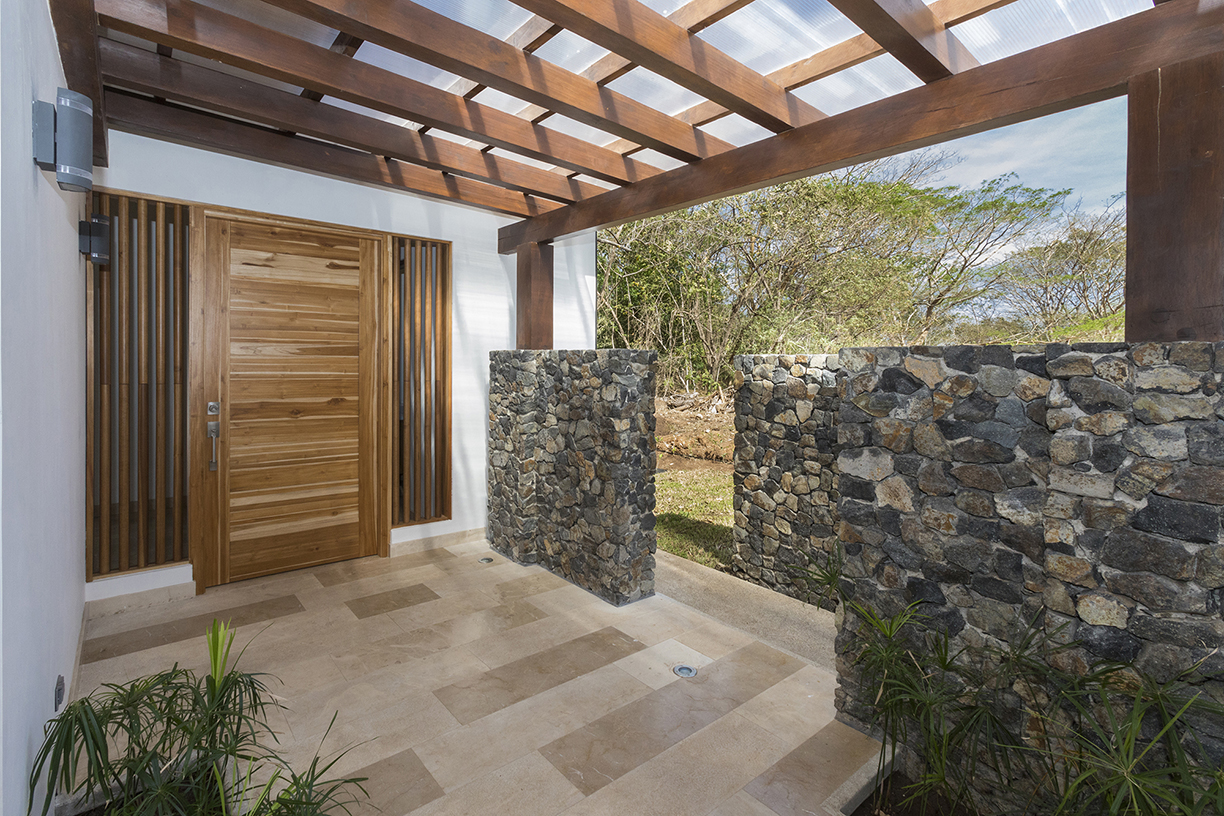
Desarrollos Hoteleros Guanacaste S.A., a subsidiary of Florida Ice and Farm Company S.A., announced that it intends to develop W Hotels in Guanacaste, Costa Rica. The W Costa Rica, Reserva Conchal is anticipated to open in early 2019.
With destinations in outstanding locations throughout the world, W Hotels merges the high-design aesthetic and boutique spirit of an independently owned hotel with the attentive, professional service, amenities and dependability of a first-class business hotel. Each W Hotel is distinctively inspired by its surroundings, infusing cutting-edge design, décor, cuisine and ambiance with authentic local influences.
The new W Hotel will be developed in Reserva Conchal, one of the most exclusive mixed-use developments of Costa Rica, and it will be operated by Starwood Hotels & Resorts as per the terms and conditions of the operation agreement executed between Starwood and DHG.
The townhomes in Aromo and the Llama del Bosque are the new properties that will be featured in W Costa Rica, Reserva Conchal. In the Llama del Bosque, guests are minutes away from several restaurants, the Beach Club and the heart-stopping beauty of Playa Conchal’s white sands. The residential component of the property is incorporated into a condominium infrastructure, which guarantees harmony and design continuity throughout the neighborhood. The iconic design and contemporary luxury of both properties will set the stage for an extraordinary experience at W Costa Rica, Reserva Conchal.
Amenities will include 151 guestrooms, the “W Living Room” lifestyle lounge, specialty restaurants, a destination bar and lounge, a fitness center, natural trails for biking and hiking, tennis courts, an infinity edge pool, a spa and meeting space. Unique promotions, exclusive partnerships and signature Whatever/Whenever® service will set W Costa Rica, Reserva Conchal apart as a place to work in comfort, play in style and escape the average hotel experience.
Photo courtesy of Reserva Conchal






